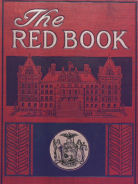
Since 1995, the New York State Library (NYSL) has been scanning New York State government documents and providing free access to these digital versions through the State Library online catalog. The State Library has expanded the types of materials being scanned to include historical materials. The items listed below have been scanned from paper copy volumes located in the New York State Library and are now freely available online as PDF documents. (Note: The links to digital documents below will open in a new window.)
Search Digital Collections - Type the title of the document in the search box, make sure Metadata Search is selected and then click on Search.
Adirondacks
Adirondack Survey: In 1872, Verplanck Colvin was named to the newly created post of Superintendent of the Adirondack Survey and authorized by the Legislature to institute a survey of the Adirondacks. Colvin directed surveying parties throughout the Adirondacks. He believed that the entire Adirondack region should be protected by the creation of a state forest preserve. His work lead to the creation of New York's Forest Preserve and the Adirondack Park. The annual reports from 1872 - 1898 that are being digitized include many maps, drawing and illustrations. IN PROCESS.
Certified Copies of Ancient Field Notes and Maps, 1772-1796, 1797-1798: This short volume published in 1903 contains certified copies of four original maps that were on file at the time in the office of the Secretary of State. These copies were certified by William Judson, State Engineer and Surveyor of New York. The text of the volume are copies of the original field notes from the surveyors of Macomb's Purchase, Totten and Crossfield's Purchase and the Old Military Tract.
American Revolutionary War, 1775-1783
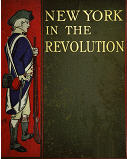
The extensive collection of material on the American Revolutionary War, with a focus on New York State, includes items such as troop rosters and other details extracted from muster rolls, colonial New York State history documents, diaries, orderly books, and broadsides.
List of American Revolutionary War materials with links to the digital documents.
Building and Construction Codes
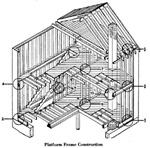
The NYS Library has digitized a variety of state building codes and standards originally published from the 1950s through the 1980s by various state agencies. Some related documents, including instruction booklets, proposed amendments, and rules and regulations, are also available online.
List of NYS building codes and related materials with links to the digital documents
Census - New York
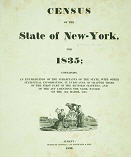
The State Census volumes that have been digitized are the published statistical schedules compiled from the original returns under the direction of the Secretary of State which describe the population and economy of counties, cities and towns in New York State. Instructions for the enumerations taking the census have also been digitized, as well as, other related documents.
List of New York State Census materials with links to the digital documents
Civil War
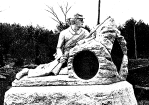
NYSL's extensive collection of material on the American Civil War includes published materials such as Frederick Phisterer's New York in the War of the Rebellion, 1861 to 1865; New York State and Federal documents; and numerous primary documents such as letters, diaries, family papers, broadsides, prints, music and maps.
List of Civil War materials with links to the digital documents
Indexes to New York State Documents

This is a list of the digital copies of bibliographies, guides and indexes from the State Library’s collection that can be used to identify relevant New York State Government Documents and related sources.
List of bibliographies, guides and indexes with links to the digital documents.
Laws of New York State
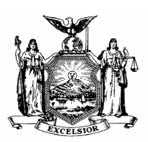
In its role as the State Law Library, the New York State Library collects heavily in the area of New York State law. The State Library's law collection includes early published editions of New State laws; these sets are in the process of being digitized.
Native American Materials
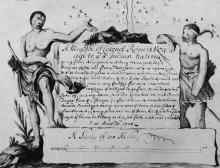
The New York State Library holds a wealth of first hand descriptions of the Native American experience in New York. These resources span four centuries, beginning with the Dutch colony of New Netherland and continuing to the close of the American frontier in western New York and beyond. Original manuscripts, New York State Documents and published accounts provide windows upon Native American life and serve as lenses through which cultural and historical interpretations can be made.
List of Native American materials with links to the digital documents
New York State Constitutional History: Constitutional Conventions
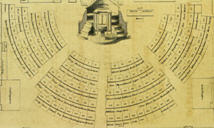
The State Library's collection includes the official published materials produced by the New York State's Constitutional Conventions and Commissions, as well as many related publications. The State Library is in the process of digitizing the official published materials produced by the State Constitutional Conventions, including journals, documents and proceedings.
List of NYS Constitutional Conventions with links to the digital documents.
New York State Government
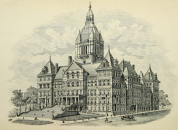
The New York State Library has a robust collection of resources on New York State government that spans from the beginning of statehood through to the current day. Selected materials on this topic, such as the New York State Redbook, have been digitized from print volumes in the New York State Library's collection.
List of New York State Government materials with links to the digital documents.
New York State History - Colonial Period
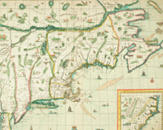
The New York State Library has a wide variety of primary documents and published material on the history of Colonial New York, including muster rolls of colonial troops, accounts of explorers, land purchase agreements, correspondence of early settlers, orderly books, diaries, maps, records of Rensselaerwyck Manor, accounts of relations with Native Americans, and personal papers.
Digital documents relating to the New York's colonial period
New York State History - Towns and Counties
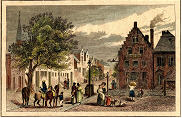
The State Library strives to be comprehensive in its collection of histories relating to the counties, cities, towns and villages of New York State. County, city, town and village histories provide biographical information on early settlers, prominent citizens, and local war heroes and depict all periods and aspects of New York State history from colonial times to the present day. Selected county and town histories have been digitized, as well as, statewide publications like French's Gazetteer.
Digital Documents relating to the history of cities and towns in New York State.
New York State Museum Publications

The New York State Museum can trace its beginning back to 1836 with the appointment of staff for the State's first official Geological and Natural History Survey. Since that point, Museum research scientists and staff have conducted "systematic investigations into the geology, biology, anthropology and history of New York" and produced a wealth of publications that detail the results of their work. Some of these publications, such as the Bulletin of the New York State Museum, Memoir of the New York State Museum and Natural History of New York, have been digitized by the NYSL.
List of Museum publications with links to the digital documents.